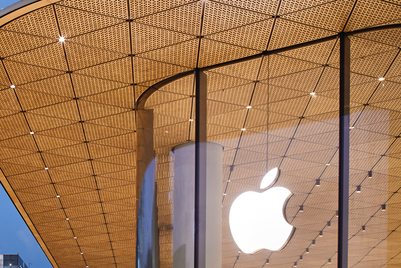
ASIA PACIFIC – There’s a split in opinion around the region’s fast-growing programmatic market, according to a new study by ExchangeWire Research.
The study, commissioned by BidSwitch, found that while almost nine in 10 (85 percent) of sellers feel there are too many vendors, fewer than two thirds (60 percent) of buyers agree.
Over half of sellers (58 percent) thought that despite increasing marketplace consolidation, the number of programmatic companies would rise within a few years, yet just 40 percent of those on the buy side shared this view.
Ruth Stubbs, CEO of iProspect Asia Pacific, noted that there is a big disconnect in the APAC market between companies on the buy side and the sell side.
“For those on the sell side, such as publishers, monetising online content is a significant challenge, which means anything that indicates increased complexity isn’t viewed favourably,” she said. “On the buy side, however, a rise in the volume of time spent online and a broadening of consumer media choices is creating an opportunity for more vendors to step in and specialise in specific areas.”

According to research firm IDC, investment in advanced marketing technologies is expected to top US$30 billion by 2018 and ExchangeWire’s research indicates that the cause of this disparity is likely to be the nascent APAC programmatic ecosystem.
With internet penetration due to rise by 3 percent in the next three years, in contrast to 1 percent in the mature US market, the study noted that it is not surprising that APAC sellers are still adjusting to the digital revolution and consequently, were the largest group of respondents (23 percent) to report it takes six to 12 months to build a new technology partnership.
With demand (spend) growing two to three times faster than supply (inventory) in APAC, the report concluded that the region’s digital publishers are slower to adopt programmatic technology than its demand-side counterparts and digital publishers in other regions.

Gavin Merwood, director of business development APAC, Teads, said programmatic is still in its infancy in APAC. The buy side is interested in driving programmatic forward and so is open to discussion with as many vendors as possible to understand the breadth of opportunity being utilised by other markets that are more advanced in the space.
“The sell side is less incentivised than the buy side to adopt programmatic, so they will think too many vendors are calling on them,” he added.
Yet amid calls for greater volumes of inventory and specialised solutions, APAC remains a strong region for ad tech and martech M&A. Ad tech deals here accounted for 18.3 percent of the global market in the first half of this year, while martech amounted to 9 percent of global deal volume.
There have been many examples of Asian acquirers buying into overseas territories, perhaps in an effort to bring APAC closer to catching up with more established regions, such as the US and EMEA.
Stubbs said that with big tech and product companies like Google and Facebook taking offerings in-house (such as YouTube inventory), the sell-side tech giants see consolidation of ad tech on the horizon.
“With less inventory available to sell, we’ll naturally see less SSPs,” she added. “However, for advertisers, a single view of media continues to be out of reach, with this instead becoming increasingly fragmented.”
Despite this trend, the percentage of respondents in the APAC who think consolidation will have a positive impact is lower than any other region—with just 50 percent of buyers and 46 percent of sellers stating they feel it will be beneficial.

Merwood suggested that APAC sell-side vendors are simply concerned that consolidation may affect their business. “Fewer players in APAC means those that stay wield more power,” he added.
Stubbs said that publisher consortiums “create a big buzz but seem to fizzle out very fast” as the control tends to stay with the top-tier publishers, instead of being evenly distributed amongst all parties.
“Unless this gap is bridged, it’s unlikely that a favourable setup will reveal itself—and the results of this report show us that the market thinks that is quite a way off,” she added.
Rebecca Muir, head of research and analysis at ExchangeWire, said the study shows that the APAC programmatic market is at an exciting stage in its development and as such, it is still overcoming fresh challenges.
As a market in the initial stages of digital advertising development, an influx of new innovative players is seen as essential to keep momentum strong and stay competitive.
Muir said extensive activity in APAC is expected as ad spend growth in the region is “arguably the strongest” in the world right now.
“International players will continue their efforts to establish a foothold in APAC, most likely through acquisition of 'home-grown' technology,” she added. “This will excite the market further and likely result in a flurry of new localised startups. The challenge will be for media agencies and advertisers to make sure they are using the right technology both locally and internationally.”
To read the full report, click here.



.jpg&h=334&w=500&q=100&v=20250320&c=1)


.jpg&h=334&w=500&q=100&v=20250320&c=1)
.jpg&h=334&w=500&q=100&v=20250320&c=1)

.png&h=334&w=500&q=100&v=20250320&c=1)








.jpg&h=268&w=401&q=100&v=20250320&c=1)
